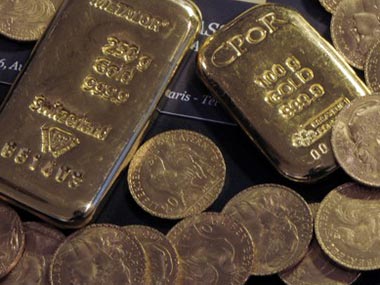That the Gold Monetisation Scheme 2015 (GMS) which replaced the 1999 scheme is slated for a similar fate as its predecessor, started sinking in when I read the Firstpost story of 24th March 2016. It among other things confirmed the apprehension that the scheme like its predecessor would remain popular only among religious shrines like Tirupati, Siddhi Vinayak temple, Mata Vaishneo Devi Trust etc. And they too are not falling over themselves and plunging into the scheme enticed by higher rates of interest—2.25% per annum for middle term deposits i.e. for 5 to 7 years and 2.50% per annum for long term deposits i.e. for 12 to 15 years. The scheme in its first six months of operation has garnered a measly 3kg.
The rich and High Net Worth Individuals (HNIs) are staying away fearing the taxman who might come calling hot on the heels of heavy deposits they have made under GMS what with the scheme conferring no tax amnesty even though the finance bill 2016 does offer exemption to the interest income as well as capital gains if any on exit. But this is not what they are silently rooting for—what they are asking for sotto voce though is immunity from probing questions as to where the gold came from. The black money scheme 2016 offers such immunity for a price—a whopping 45% tax plus penalty—impelling Rahul Gandhi to call it a fair and lovely scheme. Be that as it may.
The scheme is full of gaps and grey areas despite the government having had the experience in working it albeit under an earlier avatar. First, it has rolled out a short term scheme 1 to 3 years to be operated by the scheduled banks and taken on their balance sheets. Second, medium term scheme 5 to 7 years to be operated by the scheduled banks but not to be taken on their balance sheets. And a long term scheme 12 to 15 years once again to be operated by the scheduled banks but not to be taken on their balance sheets. Whose balance sheets the medium and long term deposits would appear in? Well, the central government’s though strictly speaking it doesn’t prepare a formal balance sheet like now the grey areas reveal themselves.
What about more than three years but less than 5 years and similarly what about more than 7 years but less than 12 years? No scheme should leave gaps. The time periods must seamlessly take off from one to another like income slabs under the income tax law. If bank’s balance sheets are capable of taking on only deposits upto three years, fine, but more than three years but upto 7 years should have been classified as medium term and more than seven years but upto 15 years as long term.
Indeed, the short term category could have been done away with. No one is going to take the trouble of getting his jewellery melted only to get it back or the equivalent cash at the prevailing market price after three years unless the gold is in the form of bullion which is likely to be the case with blackmoneywallahs. Banks should have been kept out of the scheme but for their mobilization role. That is GMS should be either medium or long term, period. Banks have the difficult task in a short term scheme because the only way they can use the gold is by giving them as loans under the Gold Metal Scheme (GMS) which is a tight rope walk for them any day.
A glaring omission is about stones and other items studded with gold. Our women do not like to wear only pure gold jewellery but also the ones that dazzles. Diamonds are more expensive than gold. A housewife who is sentimental about gold being melted right in front of her eyes i.e. before CCTVs in the assaying centers, is not going to take it kindly when her diamond studded necklace for example is roughly shorn of the diamond stones because the banks and the government are interested only in gold. And when they are so done, it leaves an ugly scar on the gold as well as on diamond. Shouldn’t the government have mandated tenderness during such trying times by putting in place a special tool for the purpose? In addition, what about the quantity of diamond and stones returned? While gold would be meticulously weighed, who will worry about stones and diamonds?
Banks have been asked to add the prevailing custom duty to the London quotation for gold monetized at the prevailing dollar rate for rupee. Fine, but is the addition of customs duty, sensible as it is for arriving at the landed cost, not required for the benefit of the depositor as well so that he earns higher interest on the resultant higher valuation. The GMS is not very clear on this.
All in all, GMS is one scheme that is bound to reveal the chinks in its armor each times one examines it with a fine toothcomb.


)




)
)
)
)
)
)
)
)